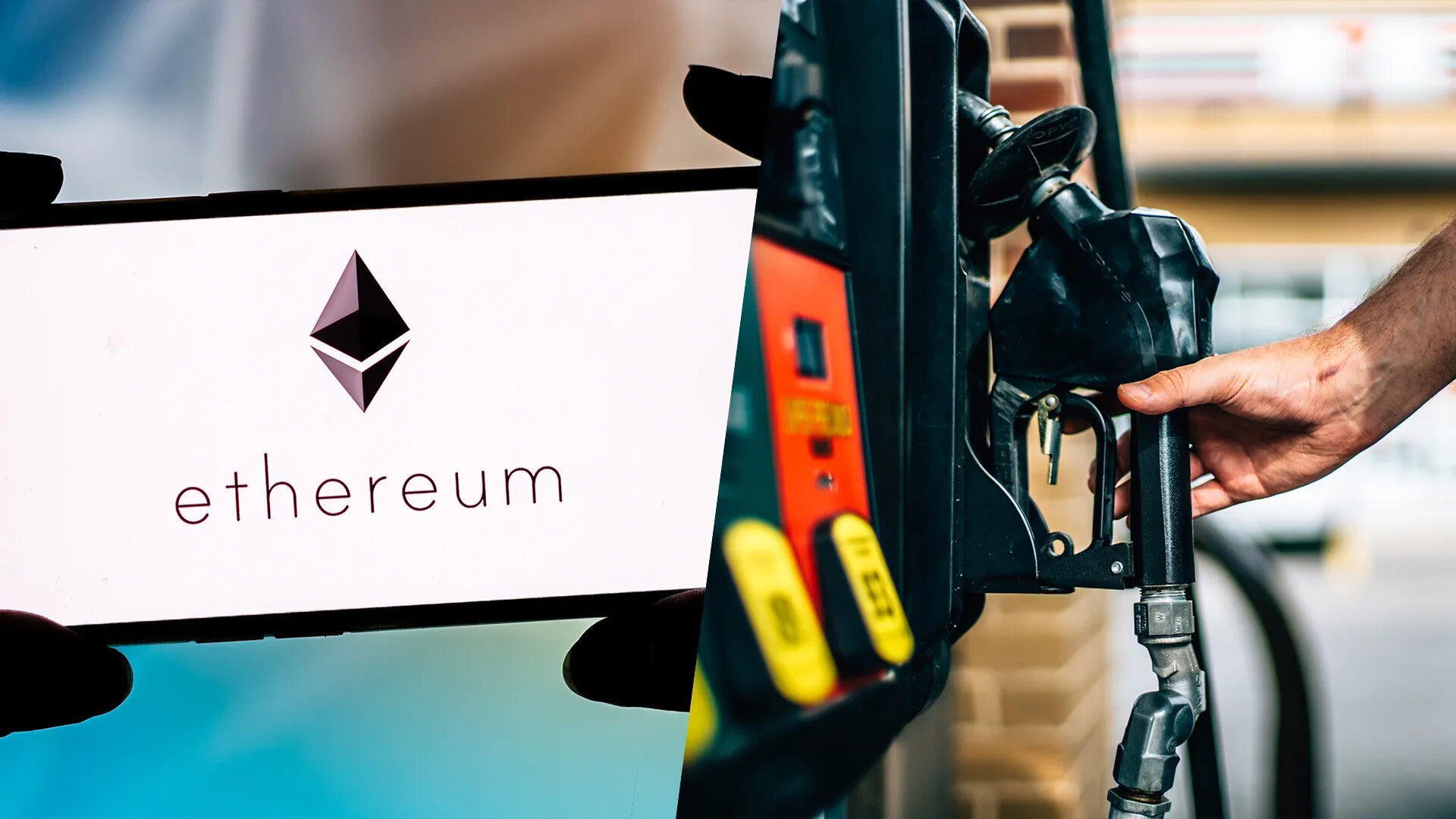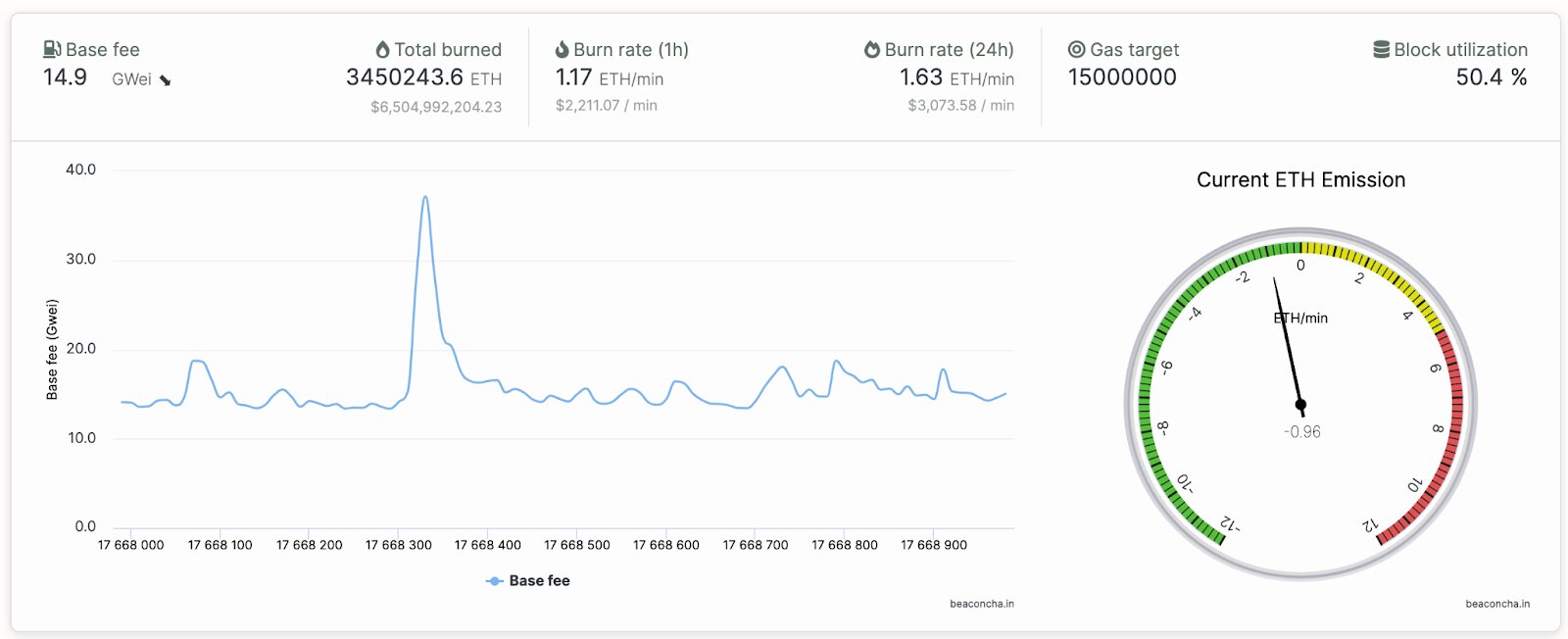Introduction
Welcome to the world of blockchain, a revolutionary technology that has gained immense popularity and recognition in recent years. From its humble beginnings as the underlying technology for cryptocurrencies like Bitcoin, blockchain has evolved to become a powerful tool with the potential to transform various industries and sectors.
But what exactly is blockchain, and why does it hold such value? In this article, we will explore the intricacies of blockchain technology, its history, and the reasons behind its widespread adoption and success.
The concept of blockchain was first introduced in 2008 by an anonymous person or group of individuals known as Satoshi Nakamoto. It was initially intended to serve as the backbone of Bitcoin, a digital currency aiming to disrupt traditional financial systems. However, its potential quickly became evident, and blockchain technology began to garner attention across diverse fields.
At its core, blockchain is a decentralized and distributed digital ledger that records transactions across multiple computers or nodes. Each transaction, or block, is cryptographically linked to the previous one, forming a chain. This structure, coupled with advanced encryption techniques, ensures the security and immutability of the recorded data.
The value of blockchain lies in its ability to solve long-standing challenges in various industries. By leveraging decentralization, transparency, and security, blockchain technology has the potential to revolutionize how we conduct transactions, store and share data, and establish trust in a digital environment.
In the following sections, we will explore in detail how blockchain creates value through its decentralization and trust aspects, its inherent security and immutability, the transparency and accountability it offers, and the increased efficiency and cost savings it brings. We will also discuss the potential of blockchain beyond cryptocurrencies and address some of the criticisms and challenges that this technology faces.
So, let us delve into the world of blockchain, where innovation and endless possibilities collide.
History of blockchain
The history of blockchain can be traced back to 2008 when Satoshi Nakamoto, an unknown person or group, published a whitepaper titled “Bitcoin: A Peer-to-Peer Electronic Cash System.” This landmark paper introduced the concept of blockchain as the underlying technology for Bitcoin, the first decentralized digital currency.
Bitcoin, launched in 2009, was developed as a response to the limitations and shortcomings of traditional financial systems. It aimed to provide a decentralized, secure, and transparent method of transferring value online. The innovation of blockchain technology was integral to achieving these goals.
Blockchain technology gained significant attention and traction as Bitcoin gained popularity in the following years. It revolutionized the way transactions were conducted, removing the need for intermediaries such as banks and financial institutions. Instead, transactions were verified and recorded by a network of computers, known as nodes, distributed across the globe.
The development of blockchain technology did not stop with Bitcoin. In 2013, Vitalik Buterin introduced Ethereum, a decentralized platform that enables the creation of smart contracts and decentralized applications (dApps) utilizing blockchain technology. This marked a significant milestone in the evolution of blockchain, as it provided a platform for developers to harness the power of blockchain for a wide range of applications beyond just financial transactions.
Since then, blockchain technology has continued to evolve and find applications in various industries. Startups, established companies, and even governments began exploring the potential use cases of blockchain, including supply chain management, healthcare, identity verification, voting systems, and more.
The history of blockchain is marked by both successes and challenges. While blockchain has shown immense promise in terms of decentralization, security, and transparency, it has also faced criticisms and skepticism. Scalability issues, energy consumption, and regulatory concerns are some of the challenges that have been raised regarding the widespread adoption of this technology.
Today, blockchain is not just limited to cryptocurrencies. It has expanded its reach to revolutionize different sectors and industries, promising efficiency, security, and trust in a digital world. As blockchain continues to evolve and mature, it is likely to shape the future of how we conduct business, exchange value, and interact with digital systems.
What is blockchain?
To understand the value and potential of blockchain, it is crucial to have a clear understanding of what it actually is. At its core, blockchain is a digital ledger that records and verifies transactions or any other form of data across multiple computers or nodes.
Traditional centralized ledgers rely on a single authority, such as a bank or government, to maintain and validate transactions. In contrast, blockchain operates on a decentralized network, where every participant has a copy of the entire ledger. This distributed nature makes it highly resistant to tampering, fraud, and censorship.
One of the key features of blockchain is its immutability. Once a transaction is recorded on the blockchain, it cannot be altered or deleted without consensus from all participants. This means that the data stored on the blockchain is transparent, permanent, and verifiable.
Blockchain technology relies on advanced cryptographic algorithms to secure transactions and maintain the integrity of the network. Each transaction is grouped into a block and then added to the chain in a specific order. To ensure that the data remains tamper-proof, each block is linked to the previous one using a unique digital signature.
Another crucial aspect of blockchain is its consensus mechanism. In order to validate and add a new block to the chain, the participants in the network must agree on its legitimacy. This is typically done through a consensus algorithm, such as proof of work (PoW) or proof of stake (PoS).
Blockchain is often associated with cryptocurrencies like Bitcoin, as it was the first widely recognized application of the technology. However, the potential applications of blockchain go far beyond digital currencies.
Blockchain technology has the capability to revolutionize various industries by providing transparency, security, and efficiency. It can be used to streamline supply chain management, track the provenance of goods, ensure fair voting systems, and enable secure peer-to-peer transactions without the need for intermediaries.
Furthermore, the emergence of smart contracts on blockchain platforms like Ethereum has opened up even more possibilities. Smart contracts are self-executing agreements that automatically trigger and enforce the terms of a contract when certain conditions are met. This eliminates the need for intermediaries and reduces the risk of fraud or manipulation.
In summary, blockchain is a decentralized and transparent digital ledger that allows for secure and immutable transactions across a network of computers. Its potential extends beyond cryptocurrencies, offering a wide range of applications across industries, revolutionizing how we exchange value and interact in a digital world.
How blockchain creates value
Blockchain technology has the potential to create value in numerous ways, revolutionizing various industries and sectors. From enhancing security and trust to improving efficiency and reducing costs, blockchain offers several key benefits that contribute to its value proposition.
Decentralization and trust: One of the fundamental aspects of blockchain is its decentralized nature. Traditional systems rely on centralized authorities for trust and validation, which can be prone to corruption, manipulation, and single points of failure. With blockchain, transactions are verified and recorded by a distributed network of computers, ensuring transparency and removing the need for intermediaries. This decentralized trust mechanism leads to increased security and reliability.
Security and immutability: Blockchain utilizes advanced cryptographic algorithms to secure transactions and ensure the integrity of the data. Once a transaction is recorded on the blockchain, it becomes virtually impossible to alter or tamper with it without the consensus of the entire network. This immutability brings a high level of security, making it difficult for malicious actors to manipulate or counterfeit transactions. This aspect of blockchain is particularly valuable in industries where data integrity and security are paramount, such as financial services, supply chain management, and healthcare.
Transparency and accountability: Blockchain provides a transparent and auditable record of transactions. Every participant in the network has access to the same information, ensuring transparency and reducing the potential for fraud or mismanagement. This transparency also enables greater accountability, as it is easier to trace and identify any discrepancies or irregularities. In industries like auditing, supply chain management, and government, blockchain’s transparency and accountability features can lead to increased trust and efficiency.
Increased efficiency and cost savings: Blockchain automates and streamlines processes by removing the need for intermediaries and manual reconciliation. This can significantly reduce administrative costs, processing times, and human error. By eliminating the need for intermediaries, blockchain enables direct peer-to-peer transactions, simplifying and accelerating the exchange of value. Additionally, smart contracts, built on blockchain platforms, enable self-executing agreements with predefined conditions, removing the need for intermediaries and reducing the time and costs associated with contract enforcement. These efficiency gains and cost savings can be particularly beneficial in industries such as banking, insurance, supply chain management, and real estate.
Overall, blockchain creates value through its decentralized and trust-building features, enhanced security and immutability, transparency and accountability, and increased efficiency and cost savings. By leveraging these benefits, businesses and industries can unlock new opportunities, streamline processes, and build trust and confidence in a digital world.
Decentralization and trust
One of the key features that make blockchain technology unique and valuable is its ability to operate in a decentralized manner, removing the need for centralized authorities and intermediaries. This decentralization fundamentally changes the way transactions are conducted, providing enhanced trust and security.
In traditional systems, such as financial institutions or government agencies, trust is placed in a central authority to validate and facilitate transactions. However, this centralized approach is susceptible to corruption, censorship, and manipulation. Blockchain technology eliminates the need for such authorities by relying on a network of computers, known as nodes, to verify and record transactions.
By distributing the transaction validation process across multiple nodes, blockchain ensures that no single entity has control or the ability to manipulate the system. This decentralized nature of blockchain brings transparency and trust, as every participant in the network can verify the validity of transactions independently.
Additionally, blockchain technology utilizes consensus algorithms to reach agreement on the validity of transactions. In the proof-of-work (PoW) consensus mechanism, for example, participants, known as miners, compete to solve complex mathematical puzzles to validate transactions. This consensus mechanism ensures that a majority of the network agrees on the legitimacy of transactions, further enhancing trust and security.
Decentralization also mitigates the risk of single points of failure. In a centralized system, if the central authority fails or becomes compromised, the entire system can collapse. Blockchain’s decentralized architecture eliminates this vulnerability by distributing the transaction history and processing power across the network.
Furthermore, the transparency inherent in blockchain contributes to the establishment of trust. All transactions recorded on the blockchain are visible to every participant, creating an auditable and tamper-proof record. This transparency enhances accountability, as any participant can trace and verify the history of transactions.
The use of cryptographic algorithms in blockchain technology further strengthens trust by ensuring the integrity and security of the data. Each transaction is encrypted and linked to the previous transaction through a unique digital signature. Any attempt to alter or tamper with the data would require consensus from a majority of the network, making it highly impractical and nearly impossible.
In summary, blockchain technology’s decentralization and trust-building features offer significant value. By removing the need for centralized authorities and intermediaries, blockchain enhances transparency, accountability, and security. The decentralized nature of blockchain empowers individuals and businesses, fostering trust in a digital environment.
Security and immutability
Security and immutability are two critical attributes that contribute to the value proposition of blockchain technology. By leveraging advanced cryptographic techniques and data validation mechanisms, blockchain provides a secure and tamper-proof environment for recording transactions and storing data.
One of the key aspects of blockchain security is its use of cryptographic algorithms. Every transaction recorded on the blockchain is encrypted using complex mathematical functions, making it extremely difficult for unauthorized individuals to access or modify the data. Encryption ensures that sensitive information remains confidential, protecting it from potential threats such as hacking and identity theft.
In addition to encryption, blockchain’s immutability feature ensures the integrity of the stored data. Once a transaction is added to the blockchain, it becomes virtually impossible to alter or delete without the consensus of the entire network. This immutability is achieved by linking each block in the chain to the previous one through a unique digital signature. Any attempt to modify a block would require changing the signature, which would result in the alteration being easily detected and rejected by the network.
The immutability of blockchain is particularly valuable in scenarios where data integrity is of utmost importance. In sectors such as healthcare, finance, and supply chain management, where accurate and unalterable records are crucial, blockchain provides a tamper-proof solution. By ensuring the immutability of transactions and data, blockchain technology eliminates the risks of fraud, manipulation, and unauthorized changes.
Moreover, blockchain’s decentralized architecture enhances its security. In a centralized system, a single point of failure or a security breach can compromise the entire network. In contrast, blockchain’s distributed design stores copies of the ledger on multiple nodes, ensuring that no single entity has control over the system. This distribution of data and processing power reduces the vulnerability to cyberattacks and enhances the overall security and resilience of the network.
Another layer of security in blockchain is the consensus mechanism used to validate transactions. Popular consensus mechanisms like proof-of-work (PoW) and proof-of-stake (PoS) require participants, known as miners or validators, to solve complex mathematical puzzles or stake a certain amount of cryptocurrency to validate transactions. This consensus process ensures that only legitimate transactions are added to the blockchain, improving the security and reliability of the network.
By combining advanced cryptography, data immutability, decentralized architecture, and consensus mechanisms, blockchain provides a robust and secure platform for storing and transferring data. The security and immutability of blockchain offer significant value in industries where data integrity, privacy, and trust are paramount.
Transparency and accountability
Transparency and accountability are two fundamental pillars of blockchain technology that contribute to its value proposition. Unlike traditional centralized systems where information is often opaque and controlled by a single authority, blockchain provides a transparent and auditable record of transactions, fostering trust and accountability.
Blockchain’s transparency stems from its underlying architecture. Every transaction recorded on the blockchain is visible to all participants in the network. This visibility creates a transparent and decentralized ledger where individuals can independently verify and validate the history of transactions without relying on a central authority.
This transparency has profound implications across various industries. In supply chain management, for example, blockchain enables the tracking and verification of each step of a product’s journey, ensuring transparency about its origin, manufacturing process, and distribution. This enhances trust and enables consumers to make more informed and ethical purchasing decisions.
Furthermore, blockchain promotes accountability by making it difficult to alter or manipulate recorded data. Once a transaction is recorded on the blockchain, its integrity is protected by cryptographic algorithms and the distributed nature of the network. Attempting to modify a transaction would require the consensus of the majority of the network, making fraudulent activities or tampering highly improbable.
Blockchain’s transparency and accountability also extend to the realm of financial transactions, where trust and verification are crucial. By providing a public record of financial transactions, blockchain offers increased transparency in banking and financial institutions. Users can track and verify their transactions, ensuring that funds are transferred securely and without manipulation.
In addition to transactional transparency, blockchain technology also enables enhanced accountability through its use of smart contracts. Smart contracts are self-executing agreements that automatically trigger and enforce predefined terms and conditions. By executing actions according to predetermined rules, smart contracts eliminate the need for intermediaries and reduce the risk of manipulation or discrepancies.
Implementing blockchain in sectors such as government and voting systems can enhance transparency and improve accountability. Blockchain-based voting systems provide a secure and transparent mechanism for citizens to cast their votes, ensuring that every vote is accurately recorded and counted. The immutability and transparency of the blockchain eliminate concerns about fraudulent activities, ensuring the integrity of the voting process.
In summary, blockchain technology’s transparency and accountability features offer significant value in various sectors. By providing a transparent and auditable record of transactions, blockchain fosters trust, eliminates the reliance on intermediaries, and enhances accountability. The decentralized and tamper-proof nature of blockchain ensures that data remains reliable and can be independently verified, leading to a more transparent and accountable digital ecosystem.
Increased efficiency and cost savings
One of the key benefits and value propositions of blockchain technology lies in its ability to improve efficiency and generate cost savings across various industries. By removing intermediaries, streamlining processes, and automating workflows, blockchain offers potential for significant gains in efficiency and cost reduction.
Traditionally, many business processes require multiple intermediaries to facilitate transactions and verify information. This can lead to delays, errors, and additional costs. With blockchain, these intermediaries can be eliminated or minimized, as the technology enables direct peer-to-peer transactions without the need for intermediaries. By cutting out middlemen, blockchain simplifies and accelerates the exchange of value, resulting in faster and more efficient transactions.
Blockchain also enables the automation of processes through the use of smart contracts. These self-executing contracts automatically execute predefined actions when specific conditions are met. For example, in a supply chain, a smart contract can be programmed to release payment to a supplier automatically once the delivery of goods is verified. This automation eliminates the need for manual intervention and reduces administrative overhead, saving time and reducing costs.
Furthermore, the decentralized and distributed nature of blockchain ensures that data is readily available to authorized participants, reducing the time and effort spent on gathering and reconciling information. This enhanced data accessibility and visibility enhance operational efficiency and enable faster decision-making.
Cost savings are a significant advantage of blockchain technology. By eliminating intermediaries, businesses can reduce fees and transaction costs associated with traditional financial systems. For example, in international remittances, blockchain-based solutions provide a faster and cheaper alternative to traditional money transfer methods, reducing transaction fees and increasing the amount received by the recipient.
Moreover, blockchain streamlines and simplifies complex processes such as supply chain management. By providing a transparent and auditable record of every step in the supply chain, blockchain technology improves traceability, reduces the risk of counterfeit or fraudulent goods, and enables faster identification and resolution of issues. These streamlined processes lead to cost savings through reduced inventory holding costs, improved inventory management, and ultimately, enhanced customer satisfaction.
Blockchain can also lead to significant cost savings in industries that require extensive documentation and record-keeping, such as insurance and healthcare. By storing data on a secure and immutable blockchain, businesses can reduce costs associated with document handling, storage, and retrieval. Additionally, the elimination of manual processes and the ability to verify data integrity in real-time can minimize errors and fraud, resulting in further cost savings for these industries.
In summary, the increased efficiency and cost savings offered by blockchain technology are significant contributors to its value proposition. By eliminating intermediaries, automating processes through smart contracts, and enhancing data accessibility, blockchain streamlines operations and reduces administrative costs. Furthermore, the transparent and auditable nature of blockchain reduces fraud, improves traceability, and enables faster decision-making, resulting in significant cost savings across various industries.
Potential of blockchain beyond cryptocurrencies
While blockchain technology gained its initial recognition through cryptocurrencies, its potential extends far beyond the realm of digital currencies. Blockchain offers a wide range of applications across various industries, disrupting traditional processes and unlocking new opportunities for innovation and efficiency.
Supply chain management: Blockchain provides enhanced traceability and transparency in supply chains, enabling businesses and consumers to track the origin, movement, and authenticity of products. By recording every step in the supply chain on a blockchain, stakeholders can verify the integrity of goods, reduce the risk of counterfeiting, improve product quality assurance, and ensure fair labor practices.
Healthcare: Blockchain technology has the potential to revolutionize healthcare by securely storing and sharing electronic health records. This enables patients to have control over their health information, promotes interoperability among healthcare providers, enhances data security, and ensures patients’ privacy rights are protected. Blockchain can also streamline healthcare payments and insurance processes, reducing administrative costs and fraud.
Identity management: Blockchain can transform how identities are managed, providing individuals with control over their personal information and reducing the risk of identity theft and data breaches. By using blockchain for identity verification, individuals can securely access services, while organizations can streamline customer onboarding and compliance processes.
Real estate: Blockchain can streamline property transactions by providing a transparent and auditable record of ownership, eliminating the need for intermediaries, and reducing fraud. Smart contracts on the blockchain can automate processes such as property transfers, title searches, and escrow, simplifying and expediting real estate transactions.
Energy and utilities: Blockchain can enable peer-to-peer energy trading, where consumers can directly buy and sell excess energy from renewable sources. This decentralized approach promotes energy efficiency, reduces reliance on centralized power grids, and fosters a more sustainable and environmentally friendly energy system.
Government services: Blockchain can enhance government services by providing transparent and tamper-proof records for areas such as voting systems, land registries, and public procurement. This reduces the risk of corruption, enhances citizen trust, and increases the efficiency of public administration.
Intellectual property: Blockchain can provide a secure platform for creators to timestamp and register their work, providing proof of ownership and protecting intellectual property rights. This can revolutionize industries such as music, art, and digital content distribution, reducing the reliance on intermediaries and ensuring fair compensation for creators.
The potential applications of blockchain are vast, with almost every industry standing to benefit from the technology’s transformative power. As blockchain continues to evolve, businesses and organizations are increasingly exploring and implementing blockchain solutions to drive innovation, enhance efficiency, and create new business models.
Criticisms and challenges of blockchain
While blockchain technology holds immense promise, it is not without its criticisms and challenges. Understanding these limitations can provide a more well-rounded perspective on the potential applications and adoption of blockchain.
Scalability: One of the primary criticisms of blockchain is its scalability. As the number of transactions increases, the size of the blockchain grows, and the time it takes to process and validate transactions may also increase. This scalability challenge limits the capacity of blockchain to handle a large number of transactions, hindering its widespread adoption in high-throughput industries like finance and e-commerce.
Energy consumption: Another concern associated with blockchain is the significant energy consumption required by certain consensus algorithms, such as proof-of-work (PoW). The energy-intensive mining process used to validate transactions on some blockchains has faced criticism for its environmental impact. While there are efforts to develop more energy-efficient consensus mechanisms, addressing the energy consumption issue remains a challenge for blockchain technology.
Regulatory challenges: The decentralized nature of blockchain poses challenges for regulatory bodies. Traditional regulatory frameworks may struggle to keep pace with the rapid development and adoption of blockchain technology. Balancing the need for consumer protection, security, and compliance with the innovative potential of blockchain presents a challenge for policymakers and regulators worldwide.
Interoperability: Blockchain networks often exist as separate entities, using different protocols and standards. The lack of interoperability between these networks poses a challenge for seamless integration and data exchange. Efforts are being made to develop interoperability protocols to enable communication between different blockchains, but achieving widespread compatibility remains a challenge.
Privacy concerns: While blockchain technology provides transparency and immutability, privacy concerns arise when personal or sensitive information is stored on a public blockchain. While there are private and permissioned blockchain solutions available that provide more control over data access, finding the balance between transparency and privacy remains an ongoing challenge.
Ease of use: Blockchain technology can be complex, making it challenging for non-technical users to understand and interact with. The user experience is a critical factor in the adoption of any technology, and blockchain’s current complexity acts as a barrier to entry for many individuals and businesses. Improving the user experience and making blockchain more accessible are essential for achieving widespread adoption.
Economic and social impact: The adoption of blockchain technology may have unintended consequences on industries and labor markets. Disintermediation and the automation of processes through blockchain can disrupt traditional business models and potentially affect job markets. Managing the economic and social impact of blockchain adoption poses a significant challenge for governments, organizations, and society at large.
Addressing these criticisms and challenges is vital for the continued growth and adoption of blockchain technology. Collaboration between industry leaders, policymakers, and regulators is necessary to create a favorable environment for innovation, address concerns, and unlock the full potential of blockchain to benefit various sectors.
Conclusion
Blockchain technology presents a world of endless possibilities. From its humble beginnings as the foundation for cryptocurrencies, blockchain has evolved to become a transformative force across numerous industries. Its decentralized nature, improved security, transparency, and efficiency contribute to its significant value proposition.
Throughout its history, blockchain has demonstrated its potential to enhance trust, streamline processes, reduce costs, and revolutionize various sectors. From supply chain management and healthcare to finance and government services, blockchain offers solutions that can reshape traditional systems and create new business models.
However, blockchain is not without its challenges. Scalability and energy consumption are ongoing concerns that need to be addressed to enable widespread adoption. Regulatory frameworks also need to evolve to keep pace with the rapid development of blockchain technology and strike a balance between innovation and consumer protection.
Despite these challenges, the potential of blockchain is vast. It reshapes trust and accountability, enhances security and transparency, and opens up opportunities for decentralized and efficient systems. The continued exploration and implementation of blockchain solutions will undoubtedly lead to further advancements and real-world applications.
As blockchain technology continues to evolve, collaboration between industry leaders, governments, and technological innovators is essential. By working together, we can ensure that blockchain’s potential is harnessed responsibly, addressing its challenges while maximizing its benefits.
The future of blockchain holds immense promise. As it continues to redefine industries and the way we interact and transact, it is clear that blockchain technology is here to stay. By embracing blockchain’s potential, we can unlock new frontiers of efficiency, trust, and innovation to build a more transparent, secure, and decentralized digital landscape.

























